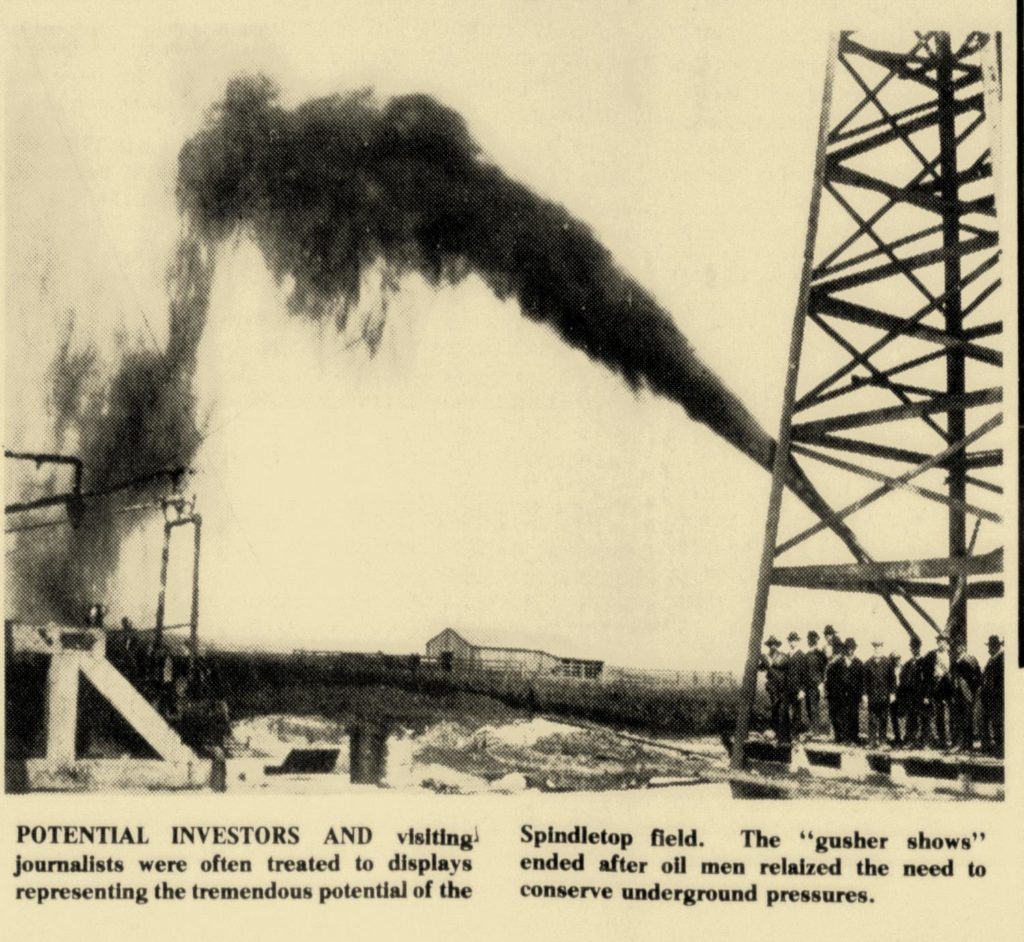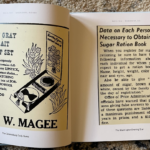Image courtesy of DeGolyer Library, Southern Methodist University
Oil production in the USA has played a pivotal role in shaping the country’s position on the world stage. At the turn of the 20th century, Texas was predominantly a state of ranchers and lumber producers, but that was about to change.
Let’s flashback to 1892 when The Gladys City Oil, Gas, and Manufacturing Company formed and purchased land on Spindletop Hill, just outside Beaumont, Texas. There had been oil seepage appearing around the area for centuries; however, no one knew exactly where the motherload would be or how much they would find.
The company drilled three shallow, unsuccessful wells and leased the land to Anthony Lucas in 1899. Lucas was one of the USA’s leading experts in salt dome formations at the time and was determined that this salt dome, Spindletop Hill, was the perfect environment for oil. This was to be the birthplace of the modern petroleum industry.
As the story goes, Lucas ran out of money after drilling a well 575 feet deep. His theory was the key to finding oil was to drill deeper. Once he found financial backing and was given the resources of an experienced drilling team, on January 10, 1901, Lucas and the team drilled to a depth of 1139 feet and struck black gold.
You can imagine the joy Lucas felt as he watched the gush of crude oil spray 100 feet into the air. The rate was estimated at 100,000 barrels per day leaking from this gusher and producing a lake of oil surrounding the well.
It took until January 19th to control the gush. They wouldn’t have known at the time, but the oilfield at Spindletop Hill would go on to produce more oil in a single day than all the world’s oil fields combined! The newspapers of 1901 and 1902 provide an engaging perspective into the birth of the oil industry. The excitement was real, and the small town’s population exploded overnight from 10,000 to 50,000. On July 14, 1901, the Saint Louis Republic reported the incredible transformation the discovery made in Southeastern Texas.
The newspapers reported the incredible earning capacity of these wells. No wonder 1500 oil companies popped up in the area within the year; the article indicated these wells earned $25,000 — $35,000 per day with their enormous output level.
There was much speculation surrounding the oil supply at Spindletop Hill. On October 26, 1902, the New York Times advised the salt environment would make the oil unsuitable and limit the oil supply. This didn’t seem to put anyone off, as oil fever was running rampant in Beaumont.
Articles from the time include interesting snippets such as new companies trying to sell shares for 25 cents, news of new gushers being discovered, and the property prices increasing dramatically. The Lima Times-Democrat reports on May 17, 1901, the astronomical land prices. What could have been bought for a few dollars was now being sold for up to $100,000 per acre.
There are stories of people who tried to sell their land for three years at $150, finally selling it after the discovery for $20,000. Another well was bought for $10,000 and sold for a whopping $1,250,000!
Between 1901 and 1985, over 153,000,000 barrels of crude oil have been produced from the Spindletop Hill oil fields. Interested in learning more? Read other fascinating stories by starting a 7-day free trial of NewspaperArchive.com today.














